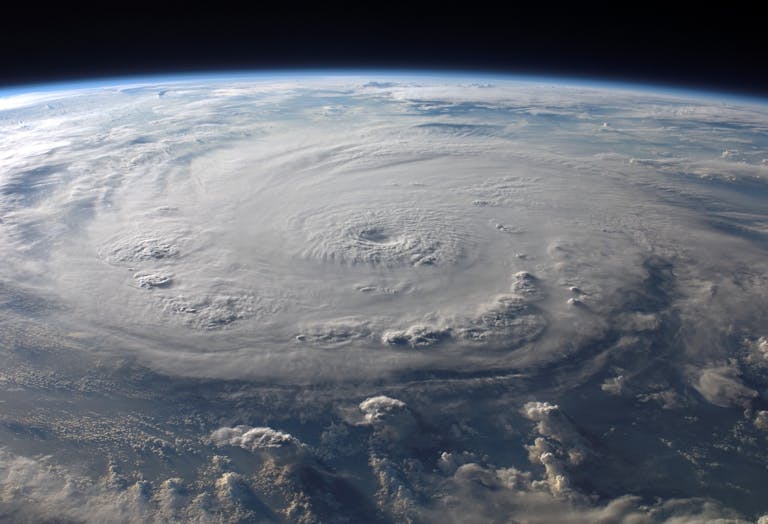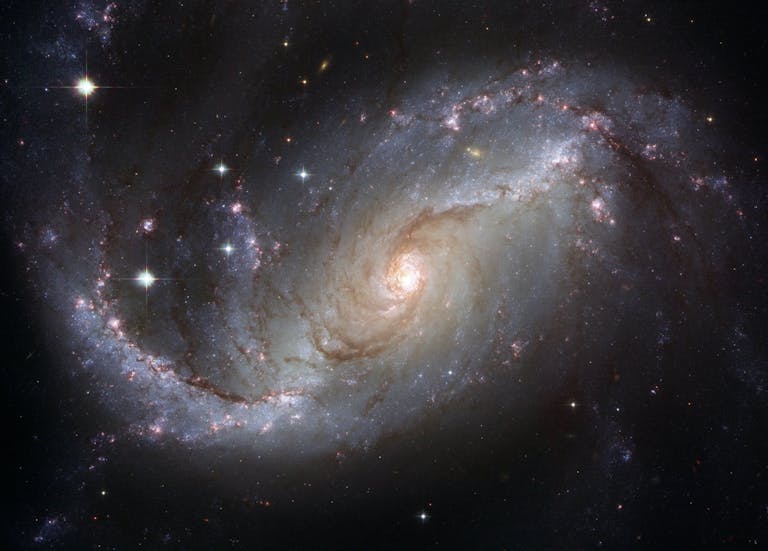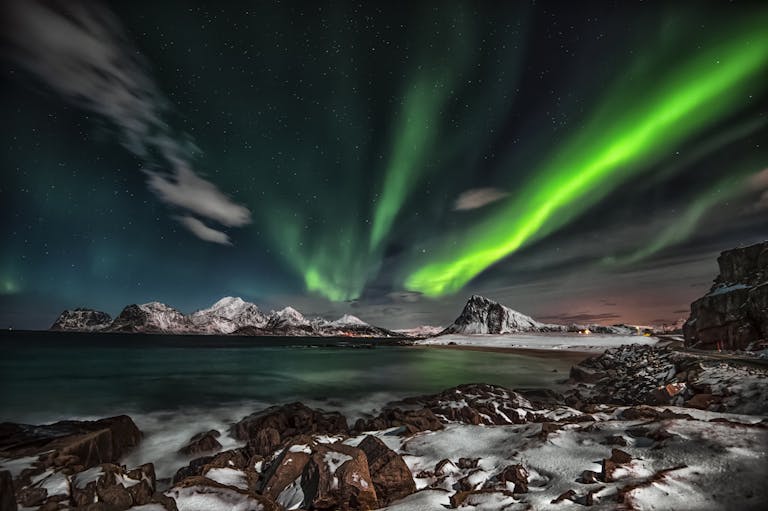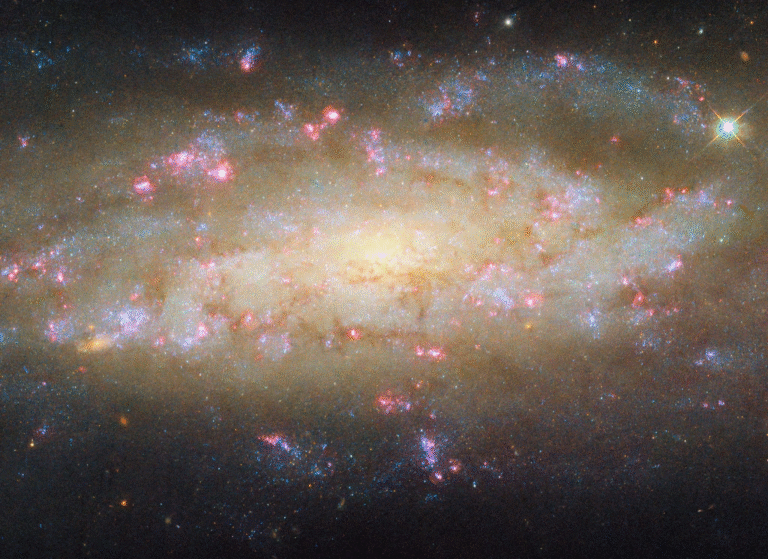Webb Telescope Hints at Atmosphere on TRAPPIST-1e, a Potentially Habitable Exoplanet
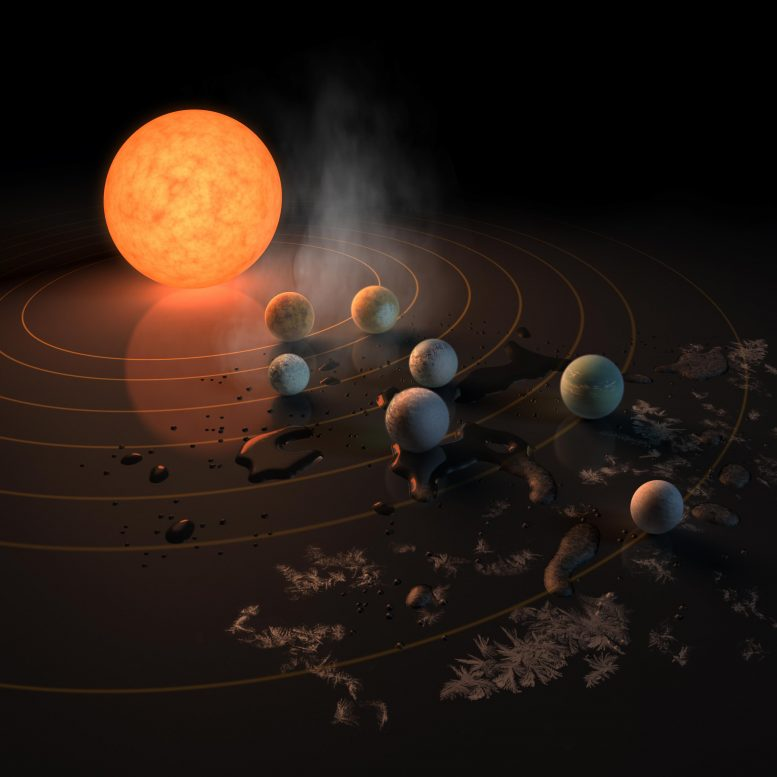
NASA’s James Webb Space Telescope (JWST) has offered an exciting hint: one of the most promising exoplanets in the TRAPPIST-1 system may have an atmosphere. The planet in question is TRAPPIST-1e, located about 41 light-years from Earth, and it orbits in what astronomers call the habitable zone — the region around a star where conditions could allow liquid water to exist.
If confirmed, this would mark the first time an atmosphere has been detected on a rocky planet in a habitable zone outside our solar system. That would be a groundbreaking milestone in the search for life beyond Earth. But as with all major discoveries, things are complicated. The data are promising, but they also leave room for doubt.
Let’s go through all the details and context step by step.
The TRAPPIST-1 System
The TRAPPIST-1 star system was discovered in 2016 and quickly became one of the most studied planetary systems. It’s a red dwarf star (much smaller and cooler than our Sun) surrounded by seven rocky exoplanets.
Three of these planets — TRAPPIST-1d, TRAPPIST-1e, and TRAPPIST-1f — sit in the habitable zone, where temperatures might allow liquid water on their surfaces.
Because red dwarfs are cooler than stars like our Sun, their habitable zones are much closer in. That means the planets orbit quickly. A “year” for TRAPPIST-1e is only a few days compared to Earth’s 365. This closeness makes transits (when the planet passes in front of its star) easier to observe, which is why astronomers focus so much attention here.
Why Atmospheres Matter
For a rocky planet to be habitable, it needs more than the right temperature zone. It requires an atmosphere. Without one, water can’t remain stable — it would evaporate or freeze away into space.
An atmosphere provides greenhouse warming, helps regulate surface conditions, and protects the surface from harsh stellar radiation. The type of gases in an atmosphere also gives clues about whether the planet might support life.
This is why TRAPPIST-1e’s possible atmosphere is such a big deal. It’s not just about finding another rock in space — it’s about determining if that rock could host liquid water and potentially life.
How Webb Looks for Atmospheres
JWST uses a method called transmission spectroscopy. When a planet passes in front of its star, some of the starlight filters through the planet’s atmosphere (if it has one). Different gases absorb light at specific wavelengths, leaving behind a signature in the spectrum.
By analyzing these signatures, astronomers can tell whether an atmosphere is present and what it might contain.
Because red dwarf stars like TRAPPIST-1 are small, the relative effect of a planet’s atmosphere on starlight is bigger, making them ideal for this kind of study.
What the Observations Show
Between June and October 2023, JWST observed TRAPPIST-1e four times using its NIRSpec instrument. The data revealed two possible scenarios:
- An atmosphere exists — likely a secondary atmosphere made up of heavier gases like nitrogen or possibly methane.
- No atmosphere at all — TRAPPIST-1e could be a bare, rocky planet.
The signal wasn’t strong enough to clearly pick one explanation over the other.
What’s Already Ruled Out
The data do allow astronomers to rule out certain types of atmospheres.
- A primary hydrogen-helium atmosphere (like Neptune or mini-Neptune planets) is extremely unlikely. Radiation from TRAPPIST-1 would have stripped it away long ago.
- A dense carbon dioxide atmosphere, like Venus, or a thin CO₂ atmosphere, like Mars, are also not supported by the current measurements.
This narrows things down to more Earth-like secondary atmospheres, though confirmation is still needed.
The Challenge of Stellar Contamination
One of the biggest problems comes from the star itself. TRAPPIST-1 is an active red dwarf, with sunspots and flaring regions that contaminate the signal. These stellar variations can mimic or obscure the signature of an atmosphere.
It took researchers over a year to carefully separate the star’s noise from the planet’s potential atmospheric signal. Even with that effort, the distinction remains tricky.
Why This Could Be Huge
If TRAPPIST-1e does indeed have a thick enough atmosphere, it could trap heat and allow liquid water on its surface. That’s the basic recipe for habitability.
Astronomers are particularly interested in detecting gases like carbon dioxide, methane, and water vapor. These molecules are tied to greenhouse effects and, in some cases, could even hint at biological activity.
While we’re far from saying TRAPPIST-1e hosts life, confirming an atmosphere would be a huge first step. It would tell us that rocky planets in habitable zones can indeed retain atmospheres — something we haven’t been able to prove before.
What Happens Next
This is just the beginning. Astronomers are planning 15 more transit observations of TRAPPIST-1e, scheduled to be completed by the end of 2025.
The new strategy involves observing TRAPPIST-1b (a planet with no atmosphere) alongside TRAPPIST-1e. By using the “bare rock” as a reference, astronomers can better correct for the star’s contamination and isolate TRAPPIST-1e’s signal.
These future observations should help confirm whether TRAPPIST-1e truly has an atmosphere and, if so, what it’s made of.
Extra Context: What Are Red Dwarf Stars?
Since red dwarfs are central to this story, let’s explore them a bit.
- Red dwarfs are the most common stars in our galaxy. They’re smaller, cooler, and dimmer than our Sun.
- Their habitable zones are very close to the star, meaning planets there orbit in just a few days.
- They can live for trillions of years, far longer than the Sun.
- The downside: they’re often very active, blasting planets with strong radiation and flares. This makes it harder for planets to hold onto atmospheres.
That’s why studying TRAPPIST-1e is so important. If it can keep an atmosphere despite orbiting a red dwarf, that boosts the chances of other red-dwarf planets being habitable too.
Extra Context: Primary vs. Secondary Atmospheres
Planets can have two general types of atmospheres:
- Primary atmospheres — formed when the planet first takes shape, capturing light gases like hydrogen and helium from the protoplanetary disk. Gas giants like Jupiter still have theirs.
- Secondary atmospheres — formed later, usually through volcanic outgassing or impacts, and dominated by heavier molecules like carbon dioxide, nitrogen, or methane. Earth, Venus, and Mars all have secondary atmospheres.
For TRAPPIST-1e, the evidence points toward a possible secondary atmosphere — if it has one at all.
Extra Context: Why Detecting Atmospheres Is So Hard
Detecting atmospheres on small rocky planets is extremely challenging:
- The signals are faint, often within the noise level of the star itself.
- Clouds and hazes can block light, flattening the spectrum so no features appear.
- You need many transits to build enough data for a reliable detection.
JWST was designed to push the boundaries here, and TRAPPIST-1e is currently one of the best chances we have to test those limits.
The Bigger Picture
The search for atmospheres is not just about TRAPPIST-1e. With the Kepler and TESS missions, astronomers have already discovered thousands of rocky exoplanets. Many orbit red dwarfs.
If JWST confirms an atmosphere on TRAPPIST-1e, it would show that habitable-zone rocky planets can retain atmospheres around small stars. That would expand the pool of potentially habitable worlds in the galaxy enormously.
Remaining Questions
Even with all this progress, some big questions remain:
- Does TRAPPIST-1e actually have an atmosphere, or is it a bare rock?
- If there’s an atmosphere, what’s its composition and pressure?
- Could water be stable on its surface, or would it still evaporate or freeze away?
- How do the star’s constant flares and radiation affect the planet’s long-term habitability?
The answers are coming — but they’ll take time and more data.
Final Thoughts
The possible detection of an atmosphere on TRAPPIST-1e is a milestone moment. While the results aren’t yet conclusive, they narrow down the possibilities and show us where to look next.
In just a couple of years, with the upcoming 15 additional transits, we might finally know for sure whether TRAPPIST-1e has an atmosphere. If it does, it will be the first confirmed case of a habitable-zone rocky planet with one. That alone would transform our understanding of how common potentially habitable worlds really are.
Research Reference: “JWST-TST DREAMS: NIRSpec/PRISM Transmission Spectroscopy of the Habitable Zone Planet TRAPPIST-1e” – The Astrophysical Journal Letters (2025)
